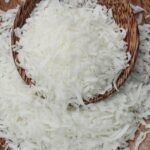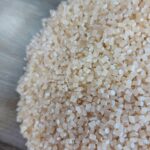CASHEW NUT SHELL OIL
In recent years, resistant tapioca starch has emerged as a key player in the development of health-conscious products across the food and supplement industries. This specialized starch, known for its unique functional properties, is much more than just an ingredient—it’s a solution that addresses a variety of consumer health needs, from digestive health to blood sugar management. In this blog, we will dive into five key ways resistant tapioca starch is revolutionizing health products, explaining why it has become an indispensable tool for food manufacturers seeking to meet modern health trends.

Table of Contents
Toggle1. Enhancing Gut Health with Prebiotic Power
Resistant tapioca starch is categorized as a prebiotic fiber, which means it serves as food for the beneficial bacteria living in the gut. These bacteria play a critical role in maintaining a balanced digestive system, and a healthy microbiome is essential for overall well-being. When resistant tapioca starch reaches the large intestine, it ferments, producing short-chain fatty acids that promote gut health and reduce inflammation.
Health-conscious consumers are increasingly prioritizing gut health, as a healthy digestive system is linked to improved immunity, mood regulation, and nutrient absorption. As a result, food products enriched with resistant tapioca starch, such as fiber supplements, yogurt alternatives, and probiotic-enhanced snacks, are seeing increased demand. By incorporating this starch into health products, manufacturers can create functional foods that directly cater to the growing consumer interest in digestive wellness.
2. Aiding in Blood Sugar Management
One of the standout benefits of resistant tapioca starch is its ability to reduce the glycemic response of foods. Unlike traditional carbohydrates, which are quickly digested and absorbed, resistant tapioca starch is broken down slowly, resulting in a much lower rise in blood glucose levels. This makes it an excellent ingredient for diabetic-friendly products and low-carb alternatives.
Blood sugar management is a key focus for many consumers, not just those with diabetes. People seeking to follow low-glycemic diets, athletes who need to stabilize their energy levels, and those simply looking to reduce their sugar intake can benefit from health products containing resistant tapioca starch. Whether it’s in breakfast cereals, protein bars, or low-sugar baked goods, this starch offers manufacturers a way to improve the nutritional value of their products while maintaining texture and flavor.
3. Supporting Weight Management and Satiety
Weight management remains one of the top health concerns for a broad range of consumers. Resistant tapioca starch plays a valuable role in this area by promoting satiety, or the feeling of fullness, which can help reduce overall calorie consumption. When resistant starch is consumed, it slows down the digestive process, leading to prolonged feelings of satisfaction after meals.
This makes it an ideal ingredient for products aimed at weight loss or maintenance. Meal replacement shakes, protein bars, and low-calorie snacks enriched with resistant tapioca starch can help consumers manage their appetite and avoid overeating, making it easier for them to stick to their dietary goals. Additionally, because resistant tapioca starch is low in calories compared to traditional starches, it is perfect for formulating products that meet consumer demand for nutrient-dense, low-calorie options.
4. Improving Nutritional Profiles in Gluten-Free Products
For individuals following a gluten-free diet, ensuring adequate fiber intake can be a challenge, as many gluten-free products are low in fiber and high in refined carbohydrates. Resistant tapioca starch offers a solution to this problem by providing a high-fiber alternative that improves the nutritional profile of gluten-free foods without affecting taste or texture.
Gluten-free breads, crackers, and snack bars enriched with resistant tapioca starch are not only healthier but also better in texture and mouthfeel. Many gluten-free products struggle with texture, often becoming too dense or crumbly due to the lack of gluten, but resistant tapioca starch helps provide a light and satisfying texture similar to that of traditional products. This makes it a valuable tool for manufacturers looking to enhance both the nutritional and sensory qualities of their gluten-free offerings.
5. Aligning with Clean Label and Allergen-Free Trends
In today’s market, consumers are increasingly demanding clean-label products—foods that are free from artificial ingredients, preservatives, and allergens. Resistant tapioca starch fits perfectly into this trend because it is naturally derived, non-GMO, and free from common allergens like gluten, dairy, soy, and nuts. This makes it a versatile ingredient for use in products marketed to consumers with specific dietary restrictions or preferences.
For manufacturers, resistant tapioca starch is a dream ingredient because it can be incorporated into everything from vegan and allergen-free snacks to clean-label baking mixes and meal replacements. Its versatility, combined with its natural, allergen-free status, helps brands meet the stringent demands of health-conscious consumers without compromising on quality or flavor.
Conclusion:
Resistant tapioca starch is proving to be a game-changing ingredient in the health food industry. Its ability to improve gut health, manage blood sugar, support weight loss, and enhance the nutritional profiles of gluten-free and clean-label products makes it a valuable addition to modern health products. As consumer demand for functional foods and natural ingredients continues to grow, resistant tapioca starch will remain a cornerstone in the development of innovative health products designed to meet the diverse needs of today’s health-conscious consumers.












